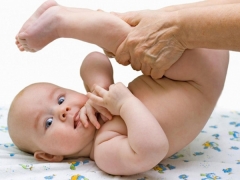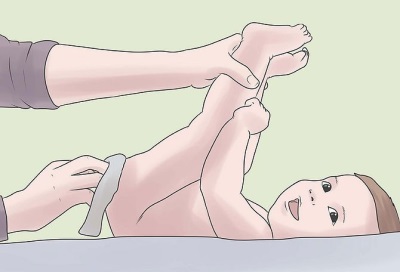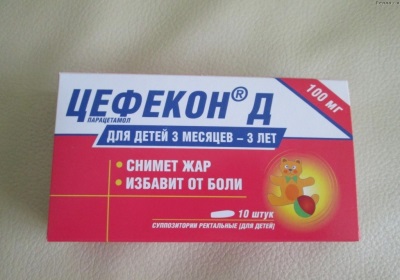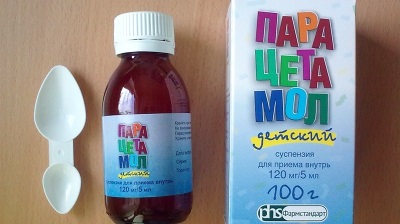Candles for children on temperature
Increased temperature in a small child often requires the use of antipyretics. Such medicines are available in different forms and candles are one of the most popular (they are also called suppositories). What are the features of their use and what kind of candles can you bring down the temperature of a child?
When should you beat the temperature?
First of all, adults are guided by the numbers that they see on the thermometer. The generally accepted recommendation of pediatricians is to reduce the temperature if it exceeds 38.5-39 ° C.
Nevertheless, there are situations when you should churn the temperature below such figures:
- If the child is not yet 2-3 months old. Such babies are advised to churn temperatures in excess of 38 ° C.
- When the baby has heart disease or diseases of the nervous system.
- If a child has febrile seizures when the temperature rises in the past.
- When the child's condition has deteriorated very much and the baby is difficult to tolerate high fever.
- If a child fever after vaccine administration.
Benefits
Suppositories at high temperatures have such advantages of use:
- Suitable for the youngest babies who have not yet learned to swallow something more dense than breast milk.
- Can be used if the child has vomiting.
- Can be used during sleep of the child.
- Do not include chemical additives (flavoring agents, colorants, etc.), therefore they are recommended at risk of allergy.
- The effect of the antipyretic drug in the candle is longer than when taken by mouth.
- Choosing to reduce the temperature of the candle, rather than a suspension or syrup, you eliminate the irritating effects of the drug on the gastric mucosa.
disadvantages
With a large number of advantages, candles with antipyretic effects have several disadvantages:
- They can cause a chair, after which you have to re-enter the candle.
- The introduction of a candle can cause discomfort and protests in a child older than 6 months.
Contraindications
Candles with antipyretic effect can not be used when:
- Hypersensitivity to their components.
- Serious disorders of the kidneys or liver.
Also, the use of suppositories is not recommended at the age of 1 month, and most antipyretic candles are intended only for children older than 3 months.
What is included in the composition?
Candles that are used in children to lower the temperature include either paracetamol or ibuprofen. These are safe medications used for fever in children all over the world. Their influence on the children's organism has been studied by a multitude of scientific studies. Paracetamol versus ibuprofen presented in another article.
The question which of the drugs is better is difficult to answer. Paracetamol is considered safer, so it is more often prescribed for babies of the first year of life. At the same time, ibuprofen has a stronger effect, as well as an anti-inflammatory effect. Both drugs have pain reliever action, therefore, can be applied to eliminate pain.
Up to a year
In young children, the use of candles to reduce the temperature is very common. This is due to the ease of use, because you can introduce a candle to very small children who cannot swallow, to children with vomiting, as well as to sleeping babies.
From 3 years old
The use of antipyretic drugs in candles in children over 3 years of age is limited due to the discomfort of the administration procedure, as well as the low dosage of the active substance. However, they will help out if the child has vomiting, has a sore throat, or is allergic to chemicals added to the antipyretic drugs in syrups.
Choosing candles for children over 3 years, it is important to consider the dose of the active substance. Such drugs as Cefecone D and Efferalganare used in children up to 10 years, as represented by the dosage of 250-300 mg of paracetamol.
Tips for choosing
Many manufacturers produce several versions of candles, different dosage, so the choice of suitable suppositories should consult a doctor. If you are going to buy and use candles with antipyretic effects yourself, be sure to tell the pharmacist the age of the baby and his weight. Then you will be able to purchase the right remedy for your baby.
The action of the suppositories comes at least in 30-40 minutes, so if you need a faster effect, use the antipyretic agent in suspension (it will work in 20 minutes).
Overview of the most popular
|
Drug name |
From what age is applied |
Active substance |
Dosage |
Application features |
|
From 1 month |
Paracetamol |
Up to 3 months - 1 candle 50 mg each, from 3 months to 3 years - 1 candle 100 mg each, for children 3-10 years old - 1 candle 250 mg each |
Enter with an interval from 4 to 6 hours. Apply up to 3 times a day for a maximum of three days. |
|
|
Ibuprofen |
From 3 months |
Ibuprofen |
With a weight of up to 8 kg - 1 candle three times a day, with a weight of 8 to 12.5 kg - 1 candle 4 times a day. |
Enter with an interval of 6 hours. Assign no more than 3 days. |
|
Nurofen |
From 3 months |
Ibuprofen |
With a weight of up to 8 kg - 1 / 2-1 candles up to 3 times per day, with a weight of 8 to 12.5 kg - 1 candle four times a day. |
Not used for children weighing less than 6 kg. Do not use for more than three days. Enter with an interval of 6 hours. |
|
Children's Panadol |
From 3 months |
Paracetamol |
At the age of 3 months to 3 years - 1 candle each |
Enter no more than 4 candles per day. The injection interval is at least 4 hours. |
|
From 3 months |
Paracetamol |
Children 3-5 months - 1 candle 80 mg each, children older than 6 months to 3 years old - 1 candle 150 mg each, children 4-10 years old - 1 candle each 300 mg |
The minimum interval between administration is 4 hours. Allowed to use up to 3 days, in one day - up to 4 times. |
Rules of application
Baby should be laid on the left side, and his legs bend at the knees and press to the tummy. Next, the adult expands the baby's buttocks and processes the anus with cream or oil. The candle, released from the packaging, is introduced by careful movement of the narrow tip into the anus. Then the child’s buttocks are brought together. The child should lie down for a while after the injection of the medicine.

On how to put a candle, see the following video of Dr. Zelensky.
Opinion E. Komarovsky: when it is necessary to use candles, and when - syrups?
The famous pediatrician reminds parents that absorption from the rectum occurs much slower than absorption from the stomach, as well as in smaller quantities. That is why the dosage of the drug in the candle is more than the same drug in the syrup. If the child has a severe deterioration of the general condition, and the temperature is very high, then Komarovsky recommends using the antipyretic, taken by mouth, because such a tool will give a faster effect.
In addition, according to a popular doctor, in a very serious condition and at very high temperatures, the intestinal vessels are spasmed, which makes it difficult to get a quick effect from antipyretic suppositories.
Suppositories Komarovsky advises to use in cases where they count on a long-term effect of the drug, for example, if the temperature starts to rise before bedtime.













